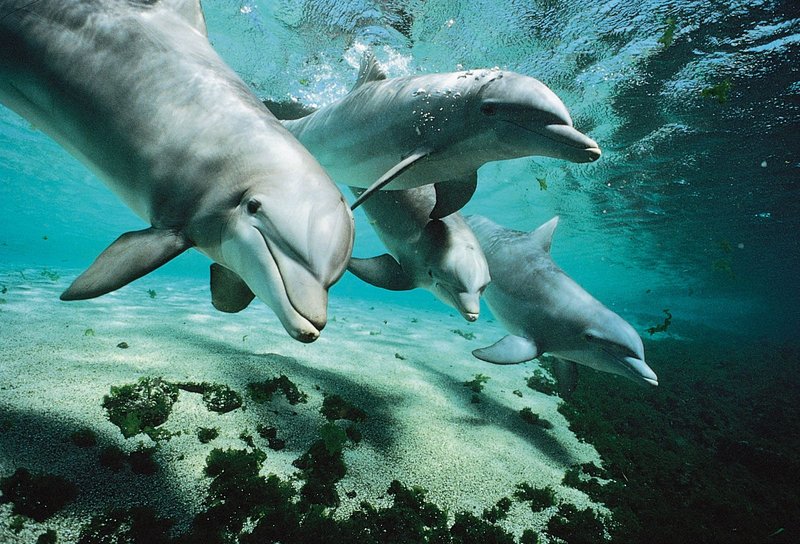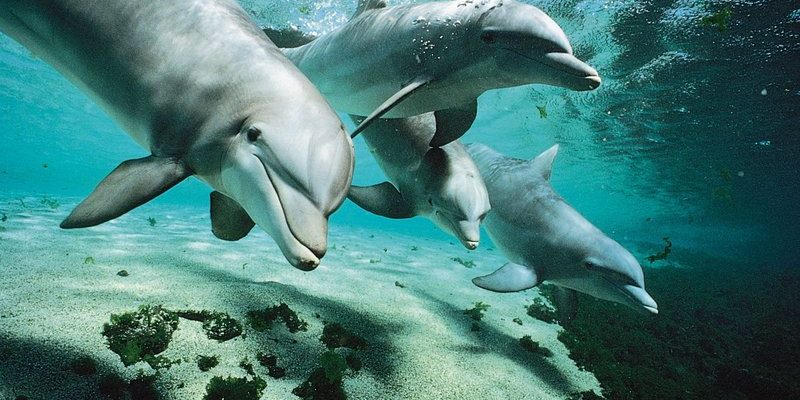
Dolphins inhabit diverse marine environments, from bustling coastal waters to deep ocean depths, affecting marine life and habitats in fascinating ways. Here’s the thing: understanding their role not only helps us appreciate these intelligent mammals but also highlights the importance of protecting their habitats from various threats. As we explore, you’ll find that each part of the ecosystem is interconnected, much like the parts of a vibrant community. So, grab your metaphorical snorkel, and let’s swim into the world of dolphins!
Dolphins as Predators
Dolphins are often seen as the apex predators in their environment, meaning they sit at the top of the food chain. They primarily feed on fish and squid, but their hunting methods are impressive. These intelligent mammals use echolocation—a process similar to sonar—to locate their prey. By sending out sound waves and listening for echoes, they can pinpoint the location, size, and shape of objects underwater.
You might be wondering how this impacts marine ecosystems. Well, consider this: when dolphins hunt and consume large amounts of fish, they help regulate the population of those species. This balance is crucial, as overpopulation of certain fish can lead to depletion of their food sources, causing a ripple effect throughout the ecosystem. In many ways, dolphins act as a natural management system, keeping fish populations in check and promoting biodiversity.
Additionally, dolphins often hunt in pods, which can be seen as a team effort. This social structure not only aids in capturing prey more effectively but also fosters a sense of community and cooperation among the dolphins. When they work together, they’re doing more than just feeding themselves; they’re helping to maintain the health of their entire habitat.
Influence on Marine Food Webs
Think of the marine food web like a giant spider’s web, with connections running in every direction. Dolphins play a vital role in maintaining these connections. When they consume their prey and later dive to the ocean floor, they leave behind organic matter that supports various other marine organisms. This process helps fertilize the ocean floor, promoting the growth of vital underwater vegetation like seagrasses and algae.
In many ways, dolphins are like gardeners of the sea. By consuming certain species and contributing to nutrient cycling, they support the growth of plants that provide not only oxygen but also habitat for countless smaller marine creatures. These plants form the base of the food web, supporting everything from tiny plankton to larger fish.
It’s also fascinating to see how various species interact with dolphins. For instance, other fish species often follow them, hoping for scraps left behind after a hunt. This relationship helps sustain those fish populations and showcases the interconnectedness of marine life. By influencing populations below them, dolphins contribute significantly to the overall health of marine environments.
Dolphins and Ecosystem Health
Ecosystem health is key to the survival of countless marine species, and dolphins are indicators of this health. When dolphin populations decline, it can signal larger issues within the ecosystem, such as pollution or habitat loss. Because they’re at the top of the food chain, dolphins often accumulate toxins in their bodies. Monitoring dolphin health helps scientists gauge the overall condition of the marine environment.
If you think of dolphins as the canaries in the coal mine of the ocean, it becomes clear how crucial they are for environmental monitoring. When scientists study dolphin populations and their behaviors, they can gain insights into the impact of human activities like fishing, shipping, and pollution on marine life. For example, if dolphin numbers drop, it often raises red flags about the health of the ocean.
Moreover, healthy dolphin populations often indicate a diverse and thriving ecosystem. If dolphins are thriving, it usually means that there are plenty of fish for them to eat, clean water, and a well-balanced habitat. Thus, protecting dolphins isn’t just about saving a beloved species; it benefits other marine life and helps preserve the entire marine ecosystem.
Dolphins and Climate Change
The effects of climate change are reaching every corner of our planet, and the ocean is no exception. Dolphins, being highly adaptive, are also facing challenges as their habitats evolve. Rising ocean temperatures can alter the distribution of fish populations, which in turn affects dolphin feeding strategies and migratory patterns.
As the ocean warms and becomes more acidic due to increased carbon dioxide levels, the habitats critical to dolphins and their prey are changing. For example, coral reefs, which provide essential nursery grounds for many fish species, are degrading. This impacts the entire marine food web, making it tougher for dolphins to find food.
Additionally, altered ocean conditions can lead to more extreme weather events, affecting dolphin migration. As they seek out stable environments, dolphins may venture into unfamiliar territories, leading to increased competition for resources. Understanding these impacts helps us realize the urgency of addressing climate change—not just for dolphins but for marine ecosystems as a whole.
Conservation Efforts for Dolphins
Preserving dolphins and their habitats is crucial for maintaining healthy oceans. Various organizations and agencies work tirelessly to protect these intelligent creatures through conservation efforts. Initiatives include establishing marine protected areas, which provide safe havens for dolphins and other marine life.
You might be surprised to learn that many countries have also implemented regulations to limit fishing practices that threaten dolphin populations. These measures can include restrictions on bycatch, which is the unintentional capture of non-target species during fishing. By reducing bycatch, we can help ensure dolphin populations remain stable.
Community involvement is also vital in these efforts. Many organizations encourage local communities to participate in conservation activities, such as beach cleanups or awareness campaigns. By engaging people and promoting stewardship, we can foster a collective responsibility to protect dolphins and their habitats for future generations.
The Cultural Significance of Dolphins
Dolphins have held a special place in human culture for centuries. Many ancient cultures revered them as symbols of intelligence, grace, and protection. From mythology to modern media, dolphins have often represented harmony between humans and nature. This cultural significance often fuels interest in conserving dolphin populations.
In addition, ecotourism has become an essential industry that focuses on sustainably enjoying natural resources. For many communities, dolphin watching tours provide income while raising awareness about the importance of protecting these animals. When people experience dolphins in their natural habitat, it can foster a greater appreciation for ocean conservation.
Despite their friendly reputation, interactions between humans and dolphins can sometimes pose risks. For instance, increasing boat traffic can lead to stress for these animals. Education and awareness initiatives can help mitigate these issues, ensuring that our admiration for dolphins doesn’t come at their expense.
Dolphins are much more than playful creatures that delight us with their intelligence and charm. They play a pivotal role in marine ecosystems, affecting everything from fish populations to the health of ocean habitats. Their presence signifies a balanced environment, making it essential to protect these incredible animals.
As we continue to explore and understand the ocean, let’s remember the vital role dolphins play. By supporting conservation efforts and advocating for ocean health, we can ensure that these magnificent mammals thrive for years to come. Protecting dolphins isn’t just beneficial for them; it’s a necessary step in safeguarding the health of our entire marine ecosystem. Together, we can contribute to a future where dolphins—and the ocean they call home—continue to flourish.

